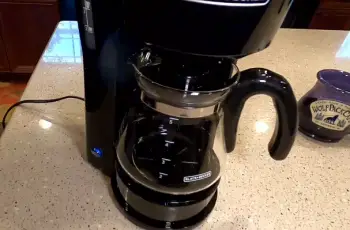Keurig Brewers are amazing one-cup brewers that produce delicious, fresh-tasting coffee one cup at a time. These brewers are hailed all around the States for their efficient coffee-making method. K-Cups, the little coffee pods specially designed to work with the brewers, are partially the reason for that magic. Beyond the K-Cups, though, the brewers are also finely tuned, efficiently engineered coffee machines.
So, how does K-Cup mix coffee so quickly? However, this is definitely not like instant coffee. We know you’re no stranger to a cup of coffee at home, and Cureg is as easy to use as pushing a button. Let’s get a little more comfortable with Cureg and how the KP Cup works.
What Is A Keurig?
Simply put, it’s a winemaking machine that produces a cup of coffee at the touch of a button. If you own a Cure, you will not buy whole or ground coffee. Instead, you will buy small plastic pods known as cups. They are the ones who have enough. Curie’s idea came from a man named John Sullivan. Like many inventors, he saw a problem he wanted to solve. Sullivan hated drip yellow coffee served in offices, stopping at hot plates when it was stolen in a minute.
He imagined a machine that would produce a single cup of coffee quickly and easily. It would be even simpler to use than existing brewing machines. And no office worker would ever again have to drink stale coffee. After lots of experimentation, he succeeded in developing a machine and coffee pod. The Keurig was born. With investment from Green Mountain Coffee Roasters and venture capitalists, the company grew. Unfortunately for Sylvan, he didn’t get on with the new investors. He left Keurig in 1997, selling his stake for just $50,000.
HOW DO K CUPS WORK?
The K-Cup comes in a fairly small disposable cup that is sealed with foil topping. Inside these disposable coffee beans, they have an extra filter and ground coffee. Before the cups are sealed, all the oxygen will be removed, which helps protect the foundation. The purpose of this seal is to reduce the exposure to moisture and heat that can jeopardize the quality of your yellow coffee.
Combine them with some hot water and you find an easy way to make a quick cup of coffee on the go. As you prepare your coffee, click here to hear what you can hear when you turn off the machine. From there, it looks like you’re waiting for hot water to sink into your curing cup and pour liquid gold into your coffee cup at the bottom. But what actually happens in this process? We are here to break it.
First, the brewer punches a hole through the foil and then sends the hot water down through the coffee, then, the beverage is pushed through the paper filter. Another hole is a puncture in the bottom of the KP cup that allows the drink to flow into your original cup or cup. Then you have a cup of coffee or a fresh cup of tea to start your day. These cups are ideal for people who are living alone, want to get up early before work, or just looking for a single service because everyone drinks a cup of coffee/tea.
How the Brewers Work
Beyond the K-cup structure, the brewer is designed to withstand high pressures and hot temperatures to provide superb-tasting coffee each time. The Sub Cureg brewer model has a water storage system that stores a large amount of water. Allows the owner to press a button to drink coffee. Any refilling or permanent pouring for this efficient brewer.
- Once a brew-size button is pressed, water is pumped through pressurized hoses into the heating chambers. Here the water is heated to the optimal temperature required to create the best-tasting coffee.
- After the water reaches coffee-brewing temperature, the water passes into a hose at the top of the brewer.
- Here, the brewer houses an opening piece in which K-Cups are inserted.
- Once the K-Cup is in place, the opening piece is depressed and shut.
- Upon doing this, small pins pierce the K-Cup to deliver the heated water and to distribute the freshly brewed coffee. One small pin punctures the foil lid, thus releasing hot water into the K-Cup. Another small pin punctures the bottom plastic layer, thus allowing the just-brewed coffee to pour straight into your mug!
How to clean them
Winemakers are designed to last for years and prevent repeated use. For this reason, they are also designed to be easily maintained. Cure brewers have a small light source – a “disc” light that will come into the message center if the brewery needs to be cleaned. The frequency you need to withdraw will depend on the level of water hardness in your neighborhood. People living in hard water areas may have to quit more often than those living in soft water areas.
Troubleshooting Your Keurig
If the “Descale” light appears, owners can use vinegar to descale the calcium build-up in the brewer pipes. Simply run diluted vinegar through your Keurig system, allowing the vinegar to work through the deposits all around the brewer. Alternatively, processed products like “Dezcal” is a Keurig-approved chemical that will descale your brewer.
It’s important to understand how these brewers work in order to keep up the maintenance. Lucky for Keurig owners, the way these brewers work is a very simple process. If the “Descale” light still appears after you’ve already descaled your brewer, you might need to take one extra step.
All the pipes need to be descaled—but you’ve already done that. Now the tiny pins that prick the top and bottom of the K-Cup also need to be cleared out. But these do not need to be descaled. They simply need to be freed of coffee grounds!
After you’ve descaled your brewer, the tiny metal pins might still be hot: so take caution when cleaning the pins. Simply take a needle, paperclip, or toothpick and poke through the pins, clearing out any fine coffee grind build-up. It’s as simple as that.
After you’ve completed a descale and a de-grinding, your “Descale” light will turn itself off and your brewer will be working at full pressure once again!


